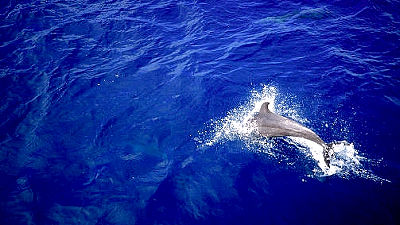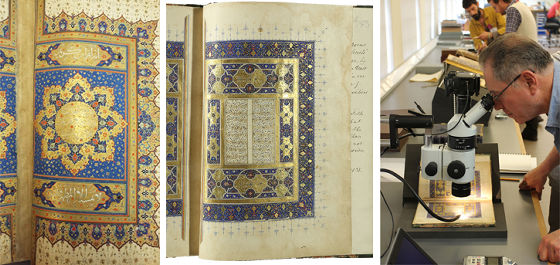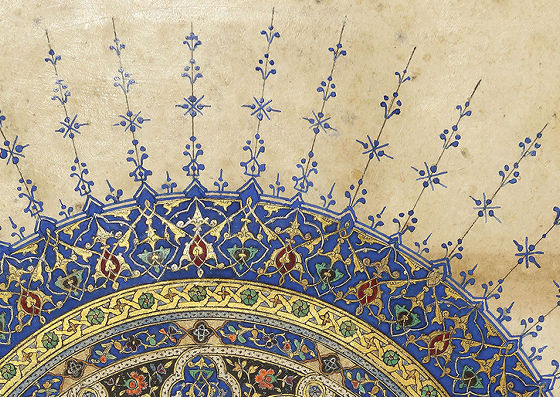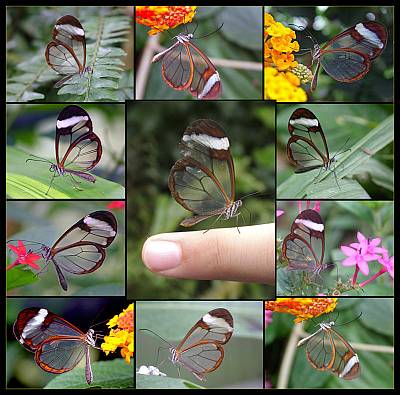How to make pigment "Ultramarine" which is said to be more precious than gold

ByMJI Photos (Mary J. I.)
Pigment which is deemed more valuable than gold "UltramarineIs useful for artists, the painter'sVermeerIt is said that they have covered families with debts owing to the use of Ultramarine too much. How is the Ultramarine made in the UK?Bodleian LibraryThat method is open to the public.
Bodleian Libraries | Exploring Ultramarine
http://www.bodleian.ox.ac.uk/our-work/conservation/case-studies/ultramarine
What is the Ultramarine and how has it been used? You can see from the following article.
The most expensive color in the world, the history of more precious pigment "Ultramarine" than gold - GIGAZINE

Ultramarine as a pigment has artificial and natural ones, but natural raw material for ultramarine is gemstonelapis lazuliis. Lapis lazuli was first used as a pigment in Afghanistan temples, and Afghanistan is still known as a place where you can mining high-quality lapis lazuli.
Lapis lazuliLazrite, Semi-precious stones made up of multiple minerals such as sodalite, indigo stone, orange stone, white parts and blue parts are mottled from high-quality ones with deep blue floating white spots Even the appearance is varied up to the low quality that you have.

The vividness of Ultramarine is greatly influenced by the quality of lapis lazuli as a raw material. In the picture below, the pigment on the left has a high grade so blue is deep and as it goes to the right it is made of raw materials of lower grade so it has a grayish hue. Lapis lazuli's blueness is due to lasrite, so the more lazulite ingredients, the more vivid Ultramarine will change.

In order to convert Lapis lazuli to Ultramarine as pigment, it is necessary to undergo a certain process. According to the records when Ultramarine was actually generated from Lapis lazuli at the Bodleian Library workshop, Lapis lazuli was pretty hard, it was crushed into small pieces by a hammer and pulverized into powder form. The more you grind it, the deeper the blue it gets deeper, but because the transparent minerals and sulfur contained in Lapis lazuli are crushed, the smell of sulfur seems to have been generated during work.
After crushing the stones with the rough pear trees of the texture, we will grind the lapis lazuli further and add water until it becomes powdery with fine fine grind of the texture.

The end is softSnow floraFinish work with a pestle made of pure water, pour water into the container to separate heavy particles and other impurities, purify it, wash several times. Ultramarine as a pigment is completed by repeating this work until the pigment accumulated at the bottom of the container becomes deep blue.

In addition, at the workshop, there were pages with pigments made from various tones of lapis lazuli in books from the 14th to 18th century, which are stored in the Bodleian Library. At this time, various kinds of media such as glazes generated from egg whites, animal adhesive, rubber, etc. were used as the pigment of each book.
For example, in the Persian decoration, the pigment is ground as finely as possibleAcacia resinIt was being kneaded. In addition, as for the pigment, honey to impart humidity and milk to give uniformity were added, and the viscosity was gradually adjusted, but honey and milk also had the role of enriching the color .
Even the same Ultramarine can see the color change by pigment adjustment can be confirmed from the following image. Ultramarine used in the book "MS. Arab. D. 98" published in the 16 th century is very bright and vivid. On the other hand, "MS Elliott 287", published in 1485, is deeply rich in blue color, but this suggests the possibility of a lot of medium.

Ultramarine pigment particles are unique shapes like seashells and have high density, so they can not be handled like watercolor paint easily. When using a medium based on water, the transparency of Ultramarine will be low but dyeing power will be born. On the other hand, however, resistance of Ultramarine is born when moving the brush because the particles are heavy and the particles have a unique shape.
Also, when combined with other colors, other colors may sink to Ultramarine ground due to differences in density. Looking at the following picture, golden ivy is drawn to connect the golden flowers drawn on the Ultramarine, but it is at a level that you do not know if you do not hold your eyes.

Meanwhile, the gold color appears vivid in MS Elliott 287.

This was because I finished with Ultramarine after drawing a pattern with gold instead of gold on Ultramarine.

Also, in the designs below, the decoration around the spearlike shape looks somewhat darker than the center part painted with Ultramarine, but this is because the viscosity was adjusted.

The vividness of color is greatly influenced by the quality of raw materials, it is difficult to work with bare hands when making pigments, and Ultramarine is often Ultramarine which grayish blue powder finished often. It was very difficult to handle even when using it. Nevertheless Ultramarine is still the color to be loved by artists to the extent that there are still artists telling that "You can cut your ears if you can get natural Ultramarine."
Related Posts:
in Note, Posted by darkhorse_log







